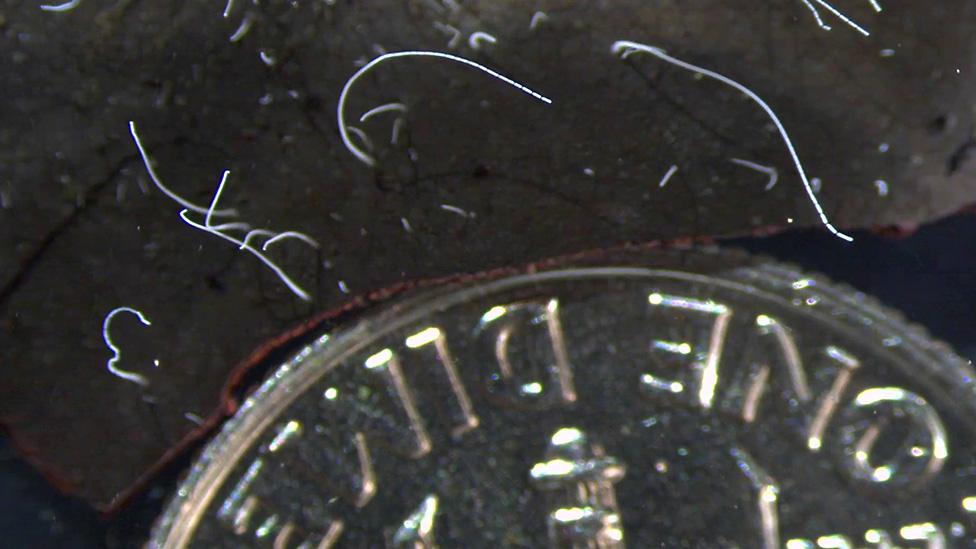Bacterium as big as an eyelash is the largest ever discovered!
- Published
- comments

A comparison of the bacterium with a coin
Scientists have discovered the world's biggest bacterium.
When you think about bacteria, you might think of teeny-tiny organisms that you need a microscope to see... well not the Thiomargarita magnifica!
This newly discovered bacterium can be seen without using a microscope, and is about the same size and shape as a human eyelash.
Thiomargarita magnifica was discovered living on sunken, decaying mangrove tree leaves in in a swamp in Guadeloupe, a group of islands in the Caribbean.
At about 1cm long, Thiomargarita magnifica, is roughly 50 times larger than all other known giant bacteria and the first to be visible with the naked eye.
The discovery was a surprise because most scientists believed bacteria would not grow this big. Previously scientists had suggested an upper possible size limit about 100 times smaller than the new species.
"When I saw them, I thought: strange," said Prof Olivier Gros, a microbiologist with the University of the Antilles.
"I found them attached to oyster shells, to leaves and branches, but also on glass bottles, plastic bottles, or ropes... The highest concentration of Thiomargarita I found was on a plastic bag - unfortunately."
The organism isn't dangerous and can't cause disease in humans, it's just MASSIVE, well for a bacteria anyway!
"These bacteria are about 5,000 times larger than most bacteria. And to put things into perspective, it is the equivalent for us humans to encounter another human who would be as tall as Mount Everest," said Jean-Marie Volland from the Joint Genome Institute at the Lawrence Berkeley National Laboratory, in the US.
Bacteria are small single-celled organisms.
They can be found in their millions on almost every habitat on Earth: soil, rock, oceans and even arctic snow, and are a vital part of the world's ecosystem.
They can even be found in the human body, and in fact there are around 10 times as many bacterial cells as there are human cells in the human body!
Most bacteria are harmless, and some are even helpful, but a small number of species can cause diseases.
Scientists aren't sure how the bacteria became so big.
One possibility is that they adapted to evade predators: "If you grow hundreds or thousands of times bigger than your predator you cannot be consumed by your predator," said Volland.
The T. magnifica is the same shape and size of a human eyelash
The scientists discovered that the way the bacterium organises its insides is pretty cool.
Bacteria normally have their DNA floating freely in the liquid, or cytoplasm, that fills their bodies.
However, T. magnifica stores its genetic material in little compartments, that the researchers are calling pepins - from the French words for fruit seeds.
It's an interesting discovery because until now scientists thought that only eukaryotic cells - which are the building blocks of more complex organisms such as humans - had them.
T. magnifica carries a lot of DNA. If you count all the "letters", or bases, in its life code, or genome, there are around 12 million!
The research team published its description of the bacterium in Science Magazine.
"This project has really opened our eyes to the unexplored microbial diversity that exists. We're really just scratching the surface, and who knows what interesting things we are yet to discover," said Dr Shailesh Date from the Laboratory for Research in Complex Systems at Menlo Park in the US.
- Published11 September 2019
- Published28 April 2021
- Published8 April 2019
